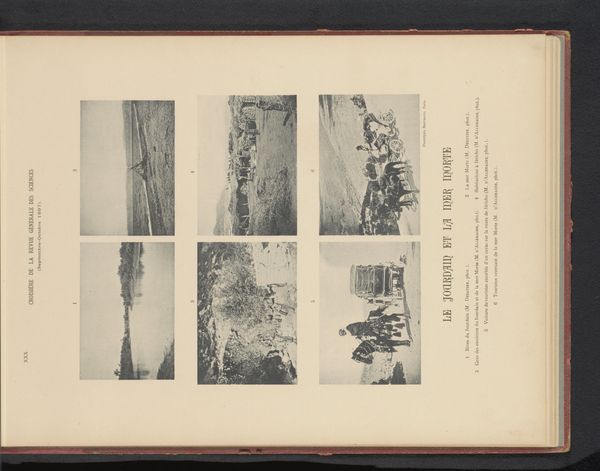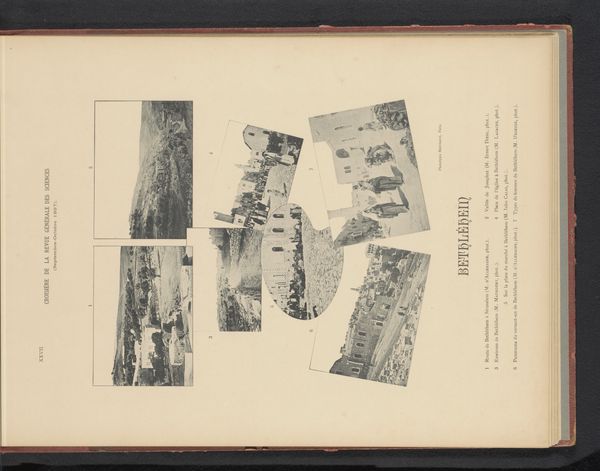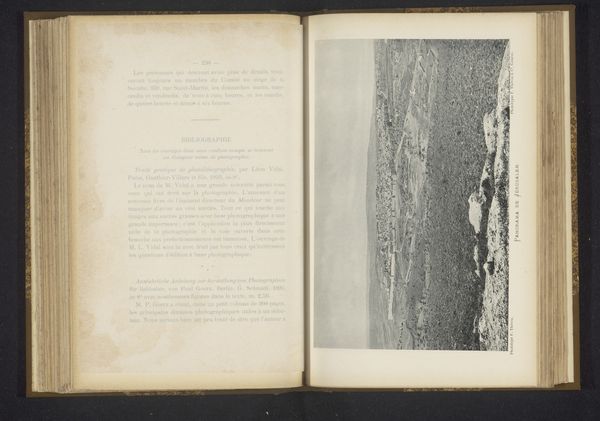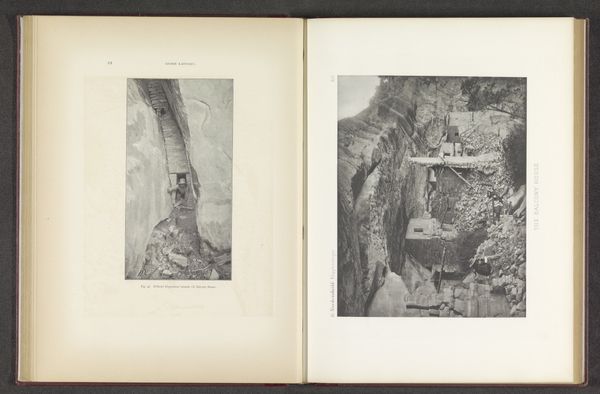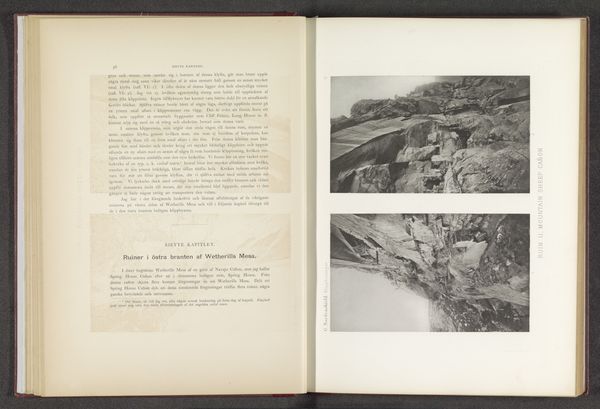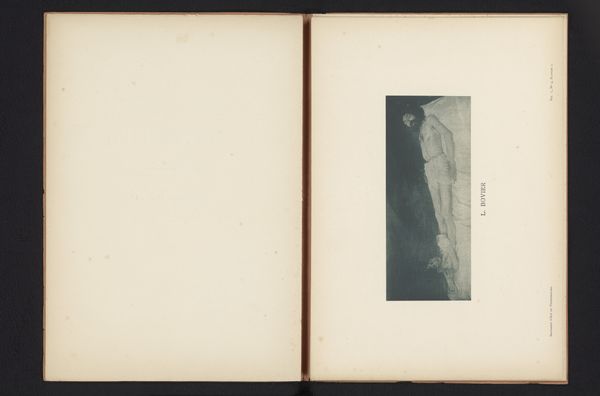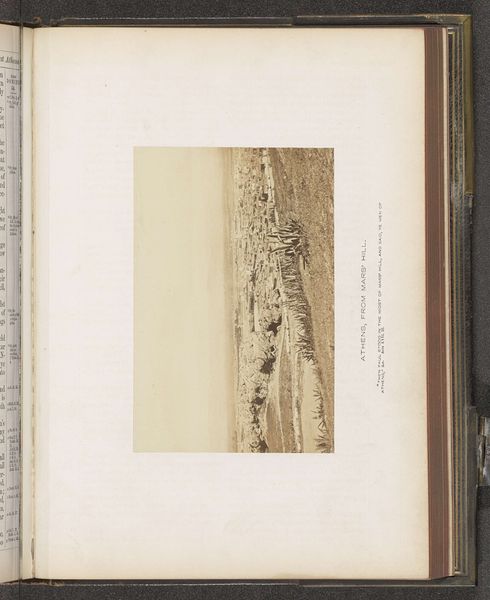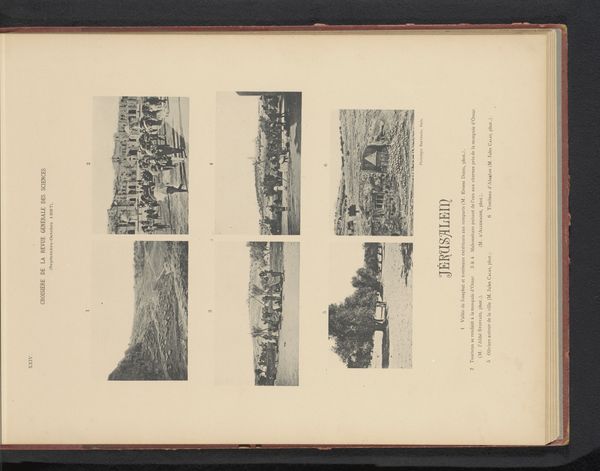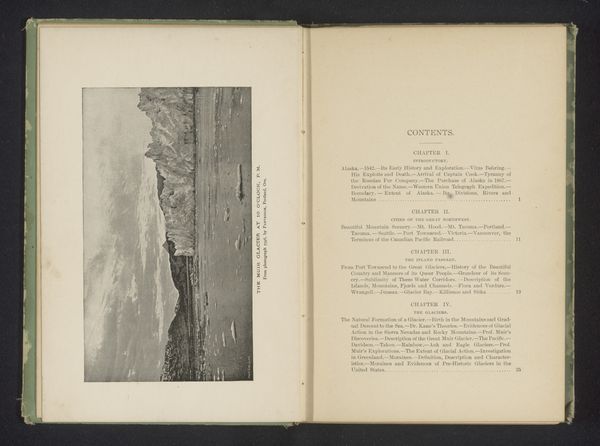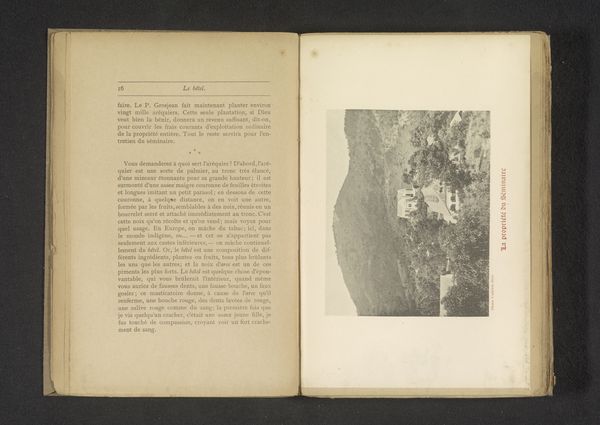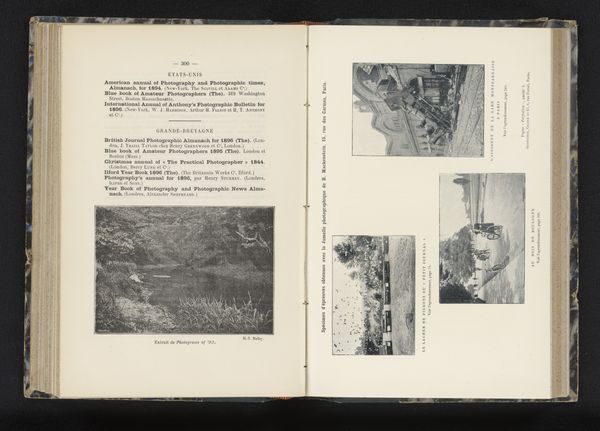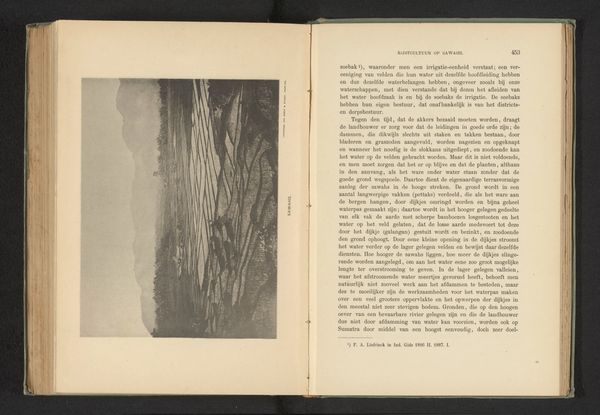
Zes gezichten op de weg van Jeruzalem naar de Dode Zee, Israël before 1898
0:00
0:00
print, photography, gelatin-silver-print
# print
#
landscape
#
photography
#
road
#
coloured pencil
#
gelatin-silver-print
#
realism
Dimensions: height 355 mm, width 293 mm
Copyright: Rijks Museum: Open Domain
Curator: Before us, we have a print, a gelatin-silver-print to be precise, titled "Six Views on the Road from Jerusalem to the Dead Sea, Israel." It's dated before 1898 and attributed to diverse makers. What strikes you first about it? Editor: It's a somber composition, starkly lit. The tones emphasize the barrenness of the landscape. There's a deliberate use of light and shadow creating a powerful sense of isolation. Curator: Absolutely. We might contextualize this within the burgeoning Orientalist movement. These photographs weren't merely documents. They reflect the power dynamics inherent in colonial-era explorations. Consider how this ‘Holy Land’ becomes a site for European consumption and control, re-framed to suit Western expectations. Editor: I can appreciate that point of view, though formally speaking, each of the six individual shots isolates specific linear arrangements; this reinforces the feeling of human impact against a vast topography. See how the roads appear almost etched into the terrain. Curator: And that etching is laden with socio-political weight. These images were intended to represent more than mere landscapes. It can be viewed as a political and spiritual endeavor, to stake claim, especially against a backdrop of rising Zionism and European imperial interests in the region. What’s captured also stands as a symbol for human interventions over untouched nature. Editor: That said, even considered apart from socio-historical circumstances, the strong contrasts of light and shadow produce a visual drama that captivates regardless of context. The varying viewpoints encourage our eyes to travel and seek details within. There's an internal logic operating simply on a visual level that I find pleasing. Curator: True, the landscape holds aesthetic qualities on its own. But by considering it alongside the histories, we can see how those artistic choices – framing, light, composition – subtly but persistently enforce dominant narratives. The work asks a complex question: Whose land is being depicted, and for whom? Editor: I suppose analyzing both its intrinsic and extrinsic values grants the piece another level of insight. Curator: Precisely. The intersection enriches and gives us new perspectives from different critical theories.
Comments
No comments
Be the first to comment and join the conversation on the ultimate creative platform.
